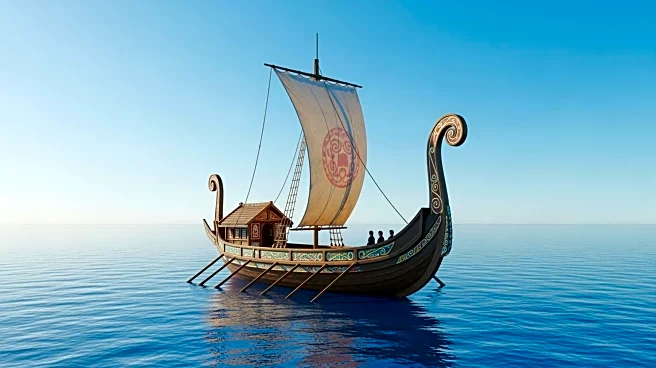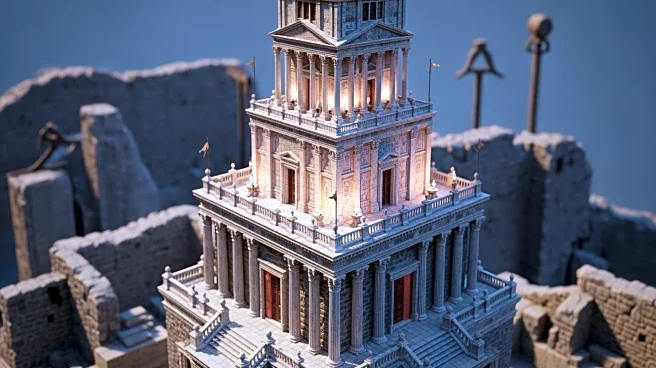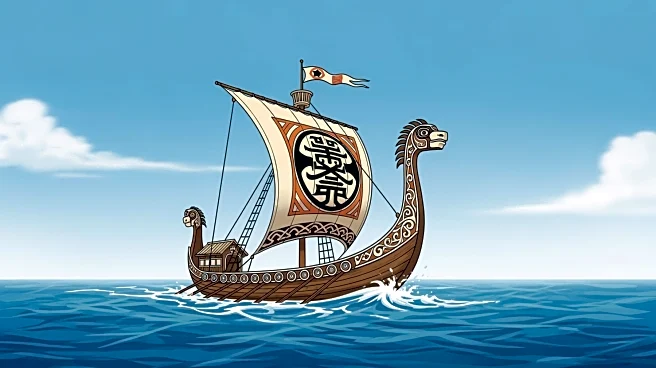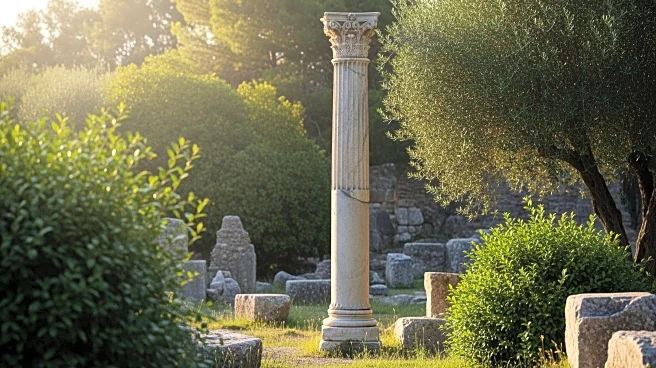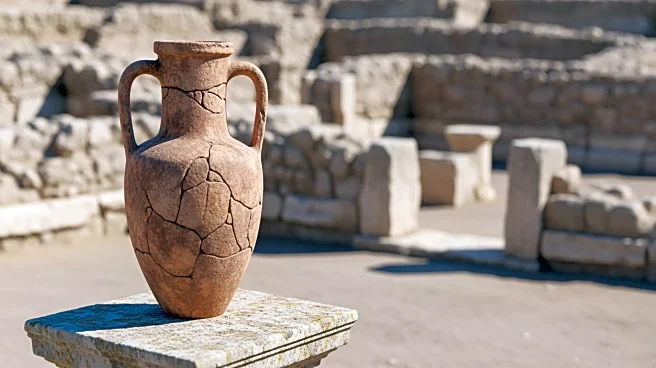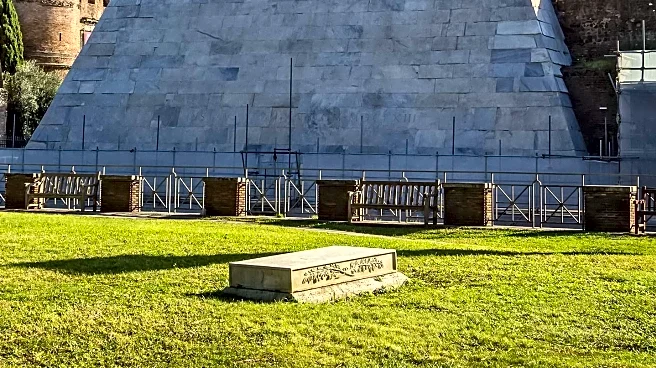What's Happening?
Archaeologists from the University of Missouri have uncovered a massive stone basin in the ancient city of Gabii, located approximately 11 miles east of Rome. This discovery, estimated to date back to around
250 B.C., is considered one of the earliest examples of large-scale Roman public architecture outside of temples and city walls. The basin's construction reflects the influence of Greek architecture on Roman designs. Gabii, once a powerful rival to Rome, shared cultural ties with the city, as both traced their descent from common ancestors. The rivalry between the two cities was marked by conflicts, including the Latin War in the early 5th century B.C. The city of Gabii, which featured aristocratic residences, city walls, and temples, eventually declined in the first century B.C. due to the lack of a strong municipal elite and the rise of Rome as a superpower.
Why It's Important?
The discovery of the stone basin in Gabii provides significant insights into the architectural and cultural exchanges between ancient Roman and Greek civilizations. It highlights the historical rivalry between Gabii and Rome, offering a glimpse into the socio-political dynamics of the time. The findings underscore the impact of Rome's expansion on neighboring city-states, as Gabii's decline was partly due to Rome's growing influence and the migration of Gabine elites to the imperial capital. This archaeological find not only enriches the understanding of Roman history but also emphasizes the importance of preserving ancient sites to uncover the complexities of past civilizations.
What's Next?
Further archaeological work is planned for 2026 and 2027 to explore more of the ruins in Gabii. Researchers aim to uncover additional structures and artifacts that could provide a more comprehensive understanding of the city's historical significance and its relationship with Rome. The ongoing excavations may reveal more about the urban planning and architectural innovations of the time, potentially offering new perspectives on the cultural and economic exchanges between ancient cities in the region.
Beyond the Headlines
The discovery of the basin in Gabii raises questions about the long-term effects of urban development and cultural assimilation in ancient times. It highlights the role of architecture as a tool for political and cultural expression, reflecting the ambitions and influences of different civilizations. The findings also prompt discussions on the preservation of archaeological sites and the ethical considerations involved in excavating and interpreting ancient remains.


